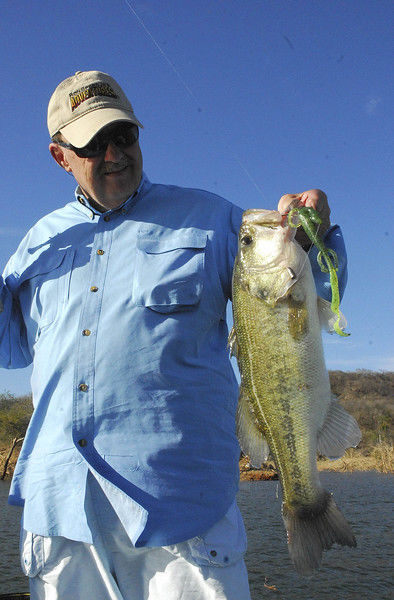Locations the key when it comes to summer bass
Published 7:12 am Monday, July 31, 2017

- STEVE KNIGHT/texasalloutdoors.com BASS FISHING CAN BE DIFFICULT during Texas’ hot summer, but a fisherman who has a lot of deep-water holes and vegetation to fish can still pull out the big ones.
STEVE KNIGHT
steve@texasalloutdoors.com
The lazy days of summers. There is no doubt they have an impact on man, dogs and bass.
With lake surface temperatures lagging not far behind the air temperatures this is the time of year bass fishing can slow to a crawl around Texas.
But why? We get hot and miserable and go looking for the shade or air conditioning when the temperature climbs into the mid-90s. What about bass?
“My experience indicates that when water temperature reaches 80 degrees, fish begin to transition to their summer patterns,” explain Todd Driscoll, Texas Parks and Wildlife Department Inland Fisheries biologist from Brookeland. “At this temperature, most or all of the shad are finished spawning and move off the banks, and a good many of the bass follow.“
The biologist explained that a portion of the bass will move out and typically suspend in open water or around deep structure such as hard-bottom points, drop-offs and bends in creeks and rivers. In search of cooler water they tend to move into the deepest water they can find with oxygen.
“Deep in summer is a relative term and will be based on the thermocline depth. Typically, in clearer East Texas lakes the thermocline will be around 25 feet, but can be as shallow as 15 feet in more off-color or turbid water,” he explained.
Those bass that do not go deep will seek shallow cover like hydrilla or pads to beat the heat. In that instance Driscoll suggests keeping an eye out around the shoreline near the cover to find the fish.
“Finding bream beds can be key to this shallow summer pattern, especially for big bass,” he said.
Fishermen can only guess how much bass move at different times of year. There has been research that takes some of the guesswork out of it. For example telemetry studies have shown bass 3 pounds and smaller are constantly on the move chasing open water shad schools. Larger bass are more likely to hold tighter in thicker cover in search of larger prey. That doesn’t change much in the summer.
“Just a few cooler days during summer really don’t affect water temperature much. Water temperatures need to drop below 80 degrees to significantly affect prey fish and bass behavior, and transition them from summer to fall patterns,” Driscoll said. That generally happens about October.
He added he does not personally know about the short-term impact from daytime to night, but believes it is more about the fishermen escaping the heat then the bass making massive moves.
Although finding the big fish can be tough during the summer heat it is not impossible. Some fishermen have caught their only 13-pound plus bass during mid-July in the heat of the day.
Probably the state’s most famous summertime big bass is a 17.63 near-state record caught on Lake Fork in August 1990 by Marshall fisherman Jerry New.
An avid fisherman, Driscoll believes timing and location trump fishing style and lure selection year-around, but especially so during the summer.
“You can idle over or fish the best deep spot on a given lake at the wrong time and completely strike out, then revisit it two hours later and load the boat. Many of these deep structure places are feeding stops that fish position on only when actively feeding, which will only typically occur in brief, 10- to 45-minute windows,” he said.
Driscoll added summer bass fishing success is often determined by the volume of locations to fish.
“Some deep spots may hold inactive schools of bass for longer periods during the day, but these spots tend to be the exception and typically need woody cover or brush piles to hold them. Point being, is to have as many potential deep places to repetitively check and fish during a single day as possible. When you time it right at a given location, bass can be caught in a variety of ways on multiple lure types,” he noted.
The same holds with shallow spots. Of course some of that is going to depend on that amount of vegetation on the lake.
“In lakes with a lot of shallow vegetation, some bass stay put 24/7 feeding and resting in this cover. Sure, some bass will be scattered in this cover, but the key to a good day is finding those wolfpacks of bass that group up in that thick vegetation. Covering a lot of water is key here to finding multiple wolfpacks, and I like to use a slower presentation, but keep the boat moving,” Driscoll said.






